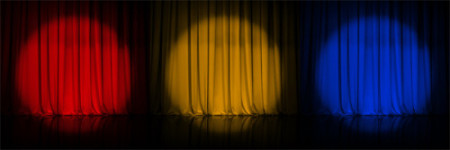Quality Hangs In The Balance.
Chapter Three. Part Three.
 To enjoy a great symphony or painting you needn’t analyze each note or brushstroke; you should embrace the emotional impact of the whole piece. It’s up to the snobby enthusiasts, historians and critics to pick apart the elements behind the artwork and ruin it for the rest of us. Hey, somebody’s gotta do it.
To enjoy a great symphony or painting you needn’t analyze each note or brushstroke; you should embrace the emotional impact of the whole piece. It’s up to the snobby enthusiasts, historians and critics to pick apart the elements behind the artwork and ruin it for the rest of us. Hey, somebody’s gotta do it.
Wine is much like music and art in that it is best appreciated when approached holistically. Unless of course, you’re one of those wine aficionados that spends all day in wine chat rooms when you’re supposed to be watching the kids. In that case you’re going to pay close attention to the individual elements inherent in wine so that, much like a music or art critic, you can bore your friends into a catatonic stupor with your insightful analysis. Thank God I’m here to help.
Let’s face it. When it comes to wine you’d probably like to be more like me – except that you’d want to bathe more often and maybe you could do without my habit of working the word sphincter into every conversation. But, if like me, you get a kick out of regurgitating the narcissistic hyperbole of the wine aficionado, then by all means read on because no one’s listening anyway.
So as I was saying, the notes or brushstrokes that constitute wine are commonly known as acidity, sweetness, fruit, tannin and alcohol. A quality wine must maintain equilibrium between these fundamentals if the wine is to be, in fact, a quality wine. The feature that keeps a wine high in alcohol from tasting too hot, or a wine high in acidity from tasting too sour is called balance.
I get a little carried away with my hands when I try to describe balance. To get an idea of what I’m talking about, picture a circus performer juggling invisible balls in a room full of people who would rather be someplace else. Anyplace else. Since my gyrations don’t translate well to the written word and since every wine professional has their own analogy to describe balance, I thought I’d turn the microphone over to my associate Peter Thompson, owner of Andrew Geoffrey Vineyards on Diamond Mountain in Napa Valley. His analogy for balance is as colorful as mine but he doesn’t require visual cues to make his point.
To paraphrase Peter, balance is a production with three curtains. The first curtain correlates with acidity, the second with fruit and the third with tannin.
Provided all three curtains rise in sync with one another, the alcohol lurking backstage stays out of the limelight. Once one curtain gets ahead or behind the others however, the alcohol will step through and ruin the show. Peter uses this example to explain why he can produce several Cabernet Sauvignons with significantly different alcohol levels, yet still maintain balance in each.
Acidity, particularly in white wines, is crucial to maintaining balance. Acidity makes your mouth salivate which consequently makes you thirst for another sip, which in turn, can make it hard to maintain your balance. (All this time you probably thought it was the alcohol that got you hammered.) A low acid, creamy-textured white may make a pleasing first impression, but without sufficient acidity it will soon seem as flat and cloying as Paris Hilton on Quaaludes.
Acidity is not always easy to discern. A well-balanced but sweet white dessert wine is high in acidity but due to its residual sugar it doesn’t display the sour characteristics or the zesty, biting texture found in other high acid whites. Author and wine educator Mary Ewing-Mulligan once taught me a neat trick to detect acidity in these sweet, viscous wines. After you swallow, pause and take notice of the saliva gland underneath your tongue. If the wine has sufficient acidity this gland will soon kick into saliva producing overdrive and you will find yourself swallowing. Saliva is the acid test for… well, acid.
For sweet wines to maintain balance, the acidity and alcohol must maintain symmetry with the residual sugar. If the alcohol level is raised, the residual sugar must rise as well, otherwise the alcohol will impart a hot sensation to the wine. However, when the residual sugar level rises the acidity must also rise to keep the sweetness from becoming syrupy and cloying. All three curtains must rise in sync if this production is to remain in balance. Thank you Peter, you may take your seat, I’ve got it from here.
Perceptually, your palate will detect sweetness immediately, but once the balancing acidity catches up, it will create a drying sensation in the wine’s finish. The next time you taste a sweet or semi-sweet Riesling, take notice of the sweetness in the attack and compare it with the sweetness you perceive in the finish. If the wine has the acidity needed to keep the residual sugar in check, the wine will appear to grow dryer and leave you salivating for another sip.
If you’ve ever had a chance to hear the Duke Ellington Orchestra in concert, or gazed at the original works of Vincent Van Gogh, you understand how balance can make or break a masterpiece. Wine is no different. Whether you’re listening to an Opus or drinking one, the elusive element that elevates it to art hangs in the balance.
 By the way, while looking for innovative new ways to work sphincter into the conversation I came across a product called Sphincterine®. They claim this, “ass-tringent all-natural personal freshener has been formulated to give you a clean, soothing, minty-fresh feeling all day long … even back there.” This has nothing to do with this blog. I just thought I’d share it with you in case you were only worried about your minty-fresh breath. And now my work here is done.
By the way, while looking for innovative new ways to work sphincter into the conversation I came across a product called Sphincterine®. They claim this, “ass-tringent all-natural personal freshener has been formulated to give you a clean, soothing, minty-fresh feeling all day long … even back there.” This has nothing to do with this blog. I just thought I’d share it with you in case you were only worried about your minty-fresh breath. And now my work here is done.























